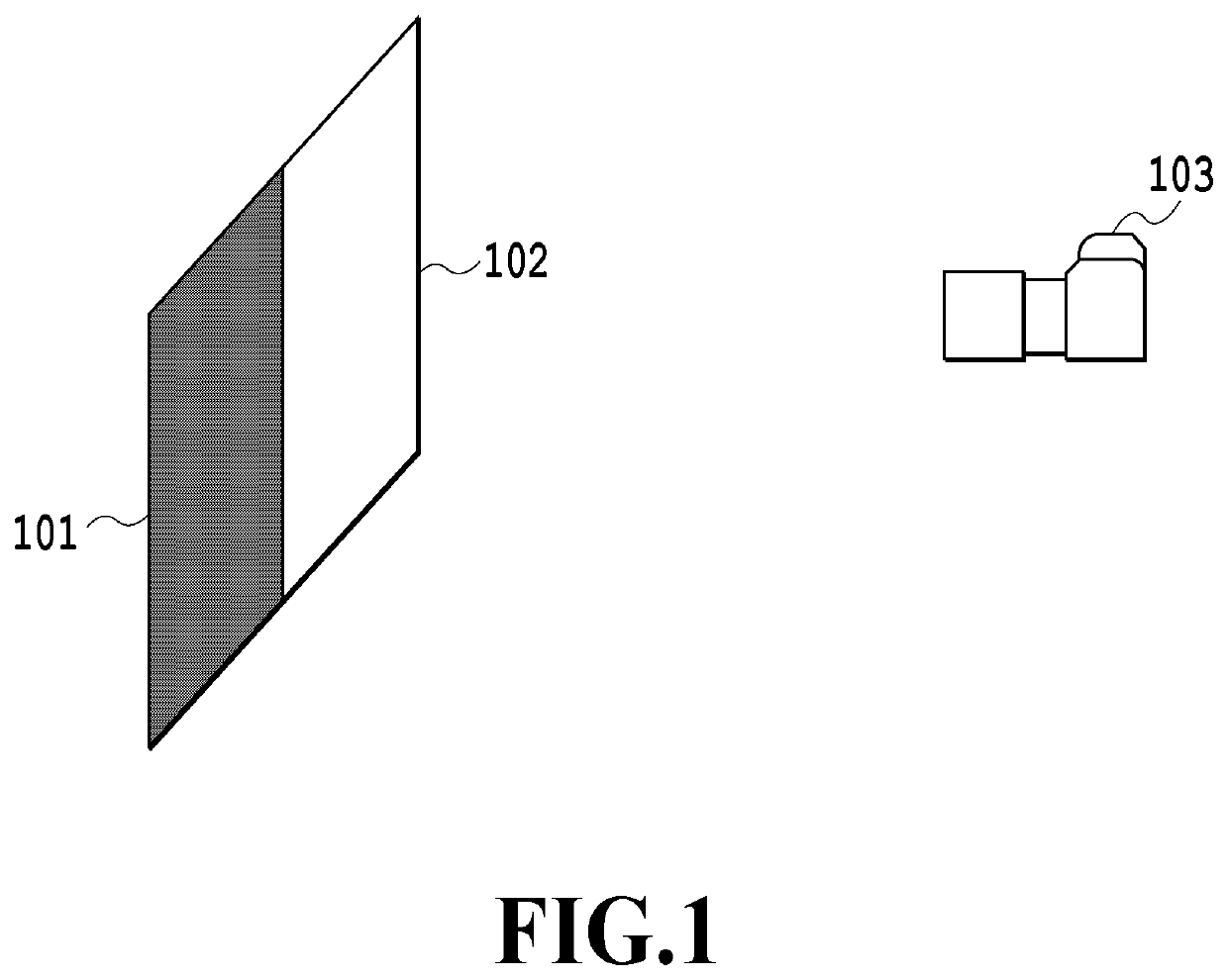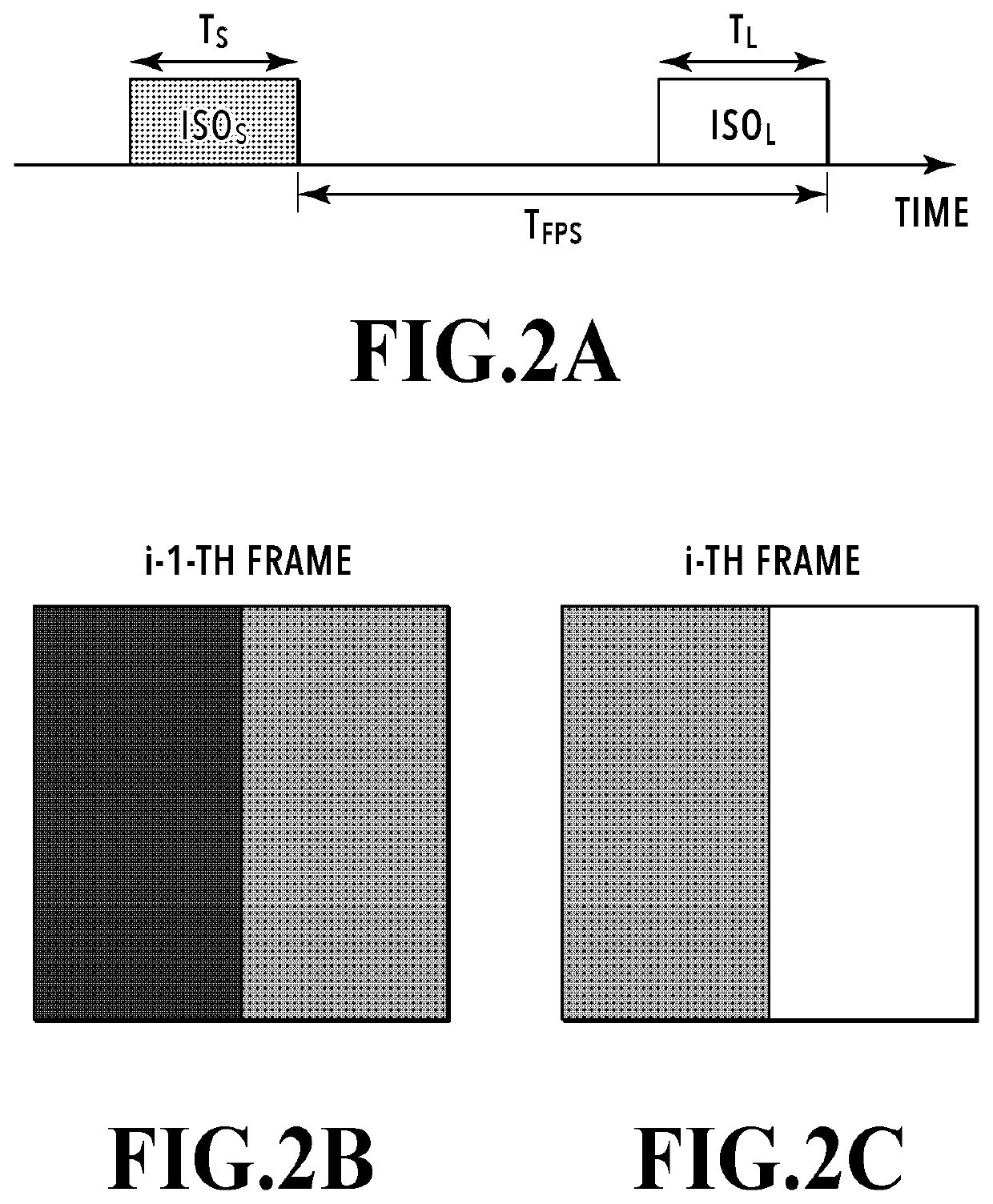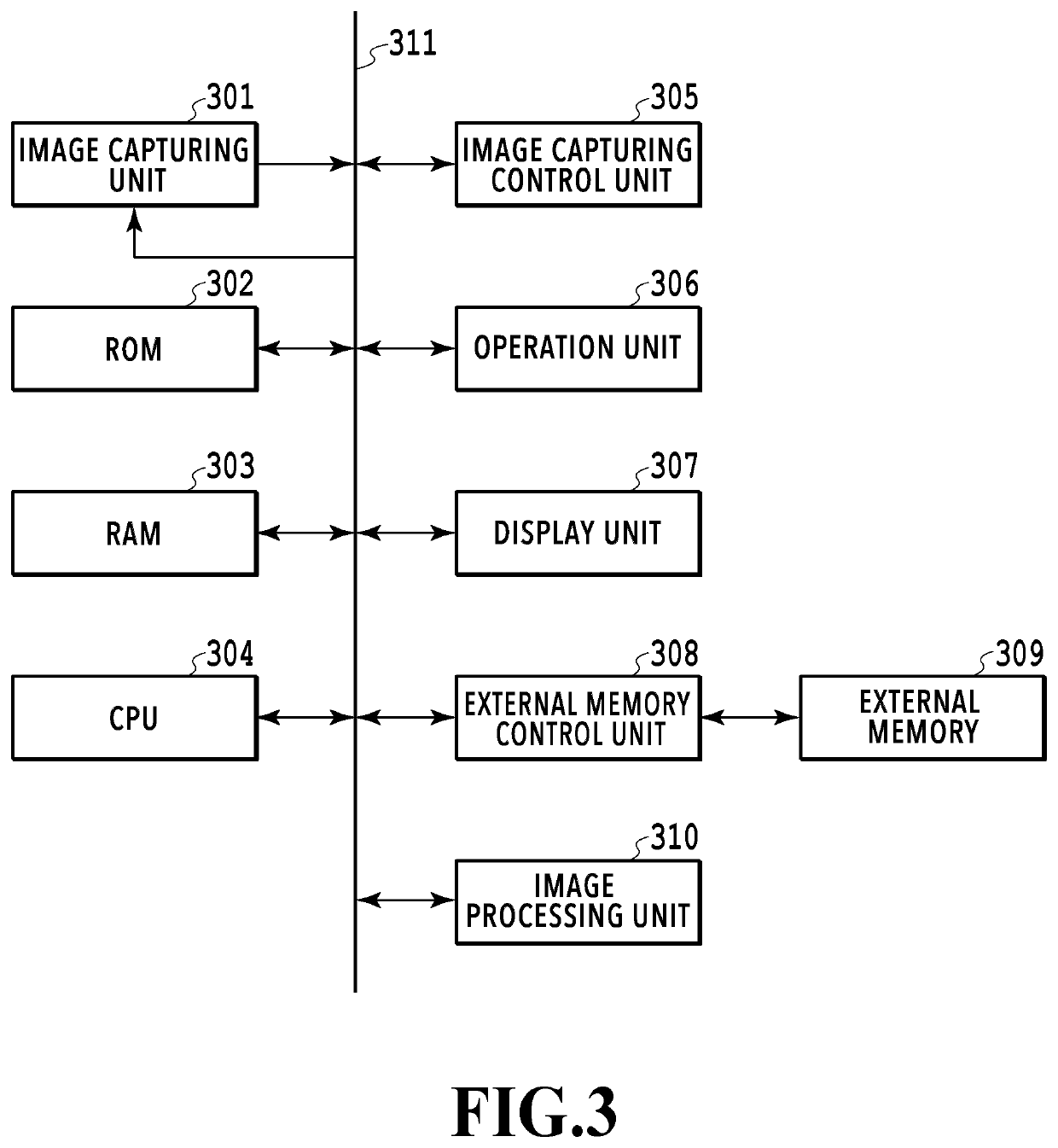Image processing apparatus, image processing method, and storage medium
a technology of image processing apparatus and image processing method, applied in the field of generating an hdr image, can solve the problem that the combined image may have a difference in noise characteristic between the light portion and the dark portion, and achieve the effect of reducing the noise gap and reducing the noise characteristi
- Summary
- Abstract
- Description
- Claims
- Application Information
AI Technical Summary
Benefits of technology
Problems solved by technology
Method used
Image
Examples
first embodiment
[0029]In the present embodiment, a case will be exemplarily discussed in which, as shown in FIG. 1, temporally divided images of an object at rest with a wide dynamic range having a dark portion 101 and a light portion 102 are captured by continuous image capturing under different exposure conditions (different sensor sensitivities in the present embodiment) with an image capturing apparatus 103. FIGS. 2A to 2C are diagrams for explaining time-division image capturing and time-division images obtained by the time-division image capturing. FIG. 2A shows a time line indicating the exposure start and end timings for frame images obtained by the time-division image capturing. The i−1-th frame image (hereinafter described as the frame image i−1) is captured with a low sensor sensitivity (also referred to as ISO sensitivity) ISOs and an exposure time TS. On the other hand, the i-th frame image (hereinafter described as the frame image i) is captured with a sensor sensitivity ISOL higher t...
second embodiment
[0053]In the first embodiment, a description has been given of a method in which captured images and an HDR image are divided into regions, and the noise gap amount is derived from the difference in standard deviation between the divided regions. However, in a case where there is shadow-detail loss in a divided region corresponding to a dark portion, a histogram of the pixel values of the divided region corresponding to the dark portion is not a normal distribution, as shown in FIG. 16. This may possibly lower the accuracy of derivation of the noise gap amount. In the present embodiment, a description will be given of a method of accurately deriving the noise gap amount even in the case where there is shadow-detail loss in the divided region corresponding to the dark portion.
[0054]FIG. 17 is a flowchart showing a noise gap amount derivation process in the second embodiment. Note that the processes in S1701, S1702, and S1704 to S1710 in FIG. 17 are similar to the processes in S901, S...
PUM
 Login to View More
Login to View More Abstract
Description
Claims
Application Information
 Login to View More
Login to View More - R&D
- Intellectual Property
- Life Sciences
- Materials
- Tech Scout
- Unparalleled Data Quality
- Higher Quality Content
- 60% Fewer Hallucinations
Browse by: Latest US Patents, China's latest patents, Technical Efficacy Thesaurus, Application Domain, Technology Topic, Popular Technical Reports.
© 2025 PatSnap. All rights reserved.Legal|Privacy policy|Modern Slavery Act Transparency Statement|Sitemap|About US| Contact US: help@patsnap.com



